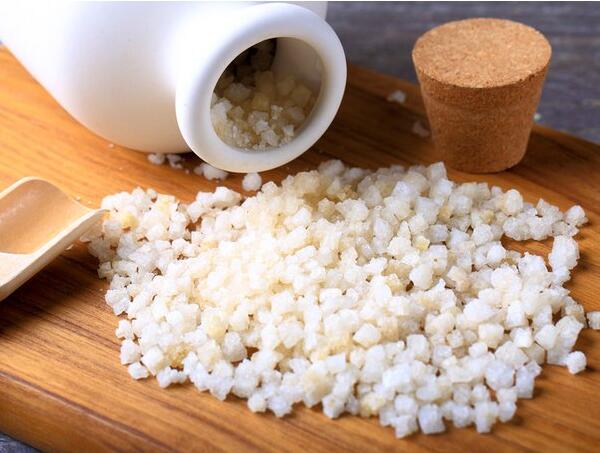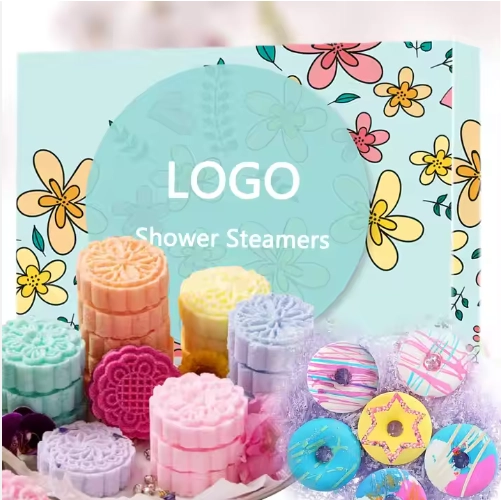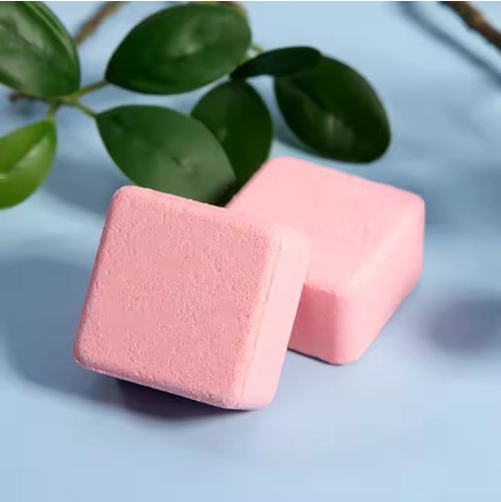What Is Epsom Salt?
Epsom salt is also known as magnesium sulfate. It’s a chemical compound made up of magnesium, sulfur, and oxygen.
Despite its name, Epsom salt is a completely different compound than table salt. It was most likely termed “salt” because of its chemical structure.
It resembles table salt and is often dissolved in baths, so you may also know it as “bath salt.” While it looks similar to table salt, its taste is distinctly different. Epsom salt is quite bitter and unpalatable.

Some people still consume it by dissolving the salt in water and drinking it. However, you probably don’t want to add it to food due to its taste.
How does epsom salt work?
When Epsom salt is dissolved in water, it releases magnesium and sulfate ions.
The idea is that these particles can be absorbed through your skin, providing you with magnesium and sulfates — which serve important bodily functions.
Despite claims on the contrary, there is no good evidence that magnesium or sulfates are absorbed into your body through the skin.
Yet the most common use for Epsom salt is in baths, where it is dissolved in bathwater.
It can also be applied to your skin as a cosmetic or taken by mouth as a laxative or magnesium supplement. However, because of its laxative effects, it might not be an ideal choice as a magnesium supplement if your goal is to prevent deficiency.
Does Epsom Salt Expire?
Although Epsom salt comes with an expiration date, this is purely because it’s a legal requirement. Most manufacturers say it’s perfectly safe to use long after this date has passed, although it may start to clump or get hard after that point.
For most products, the best-before date is around two to three years after the manufacturing date, giving you a fair amount of leeway. It doesn’t, however, guarantee that your Epsom salt will still be good to use when disaster hits. After all, it could be 10 years before you’re faced with surviving alone in the woods.
Rather than worrying about the expiration date, survivalists should consider, “Does Epsom salt ever go bad?” By and large, the answer is no – the chemical makeup of Epsom salt keeps it intact long after its best-before date has passed.
Epsom salt, or magnesium sulfate to give it its proper title, is a naturally occurring mineral that, while soluble in water, doesn’t break down as rapidly as other similar compounds. As a result, it can last for years. Even if it gets a bit lumpy, it’s still safe to use.
Furthermore, keeping Epsom salt in a cool, dark place will naturally deter most microbes and bacteria so it won’t become rotten or rancid as other substances may.
How To Store Epsom Salt So It Keeps Its Potency
Unless your Epsom salt becomes contaminated by some outside source, it should retain its potency even if a little moisture gets in and causes it to clump. Keeping it in an airtight container can help prevent this and further increase its lifespan.
If you notice your Epsom salt looking a little lumpy or discolored, don’t worry about it too much. It’s certainly still safe for external use, even if taking it as a laxative may no longer be the best idea.
Safe to use and capable of maintaining its potency for years, if not decades, Epsom salt should never be one of those 25 items you forgot to put in your bug-out bag.
Where To Wholesale Epsom Salts?
Established in 1995, Boymay is a large-scale manufacturer of bath products with over 10 years of experience researching and producing bath bombs and shower steamers.
Our large 40,000-square-meter facility houses 14 automated production lines and over 200 employees. With a daily output of 20,000 units, we uphold stringent quality standards, evidenced by our GMP 211, GMPC, ISO22716, FDA, and SMETA certifications.
If you want to customize or wholesale Epsom salt products, you can look for the following information.
| Epsom Salt Bath Bombs Supplies Wholesale | Epsom Salt Foot Scrub Wholesale | Lavender Epsom Salt Wholesale |
Previous
How to label bath bombsSend Inquiry





